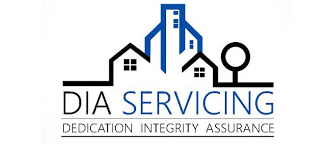1098 and 1099-INT Forms: Your 8 Burning Questions Answered!
In the realm of tax filing, two forms often emerge at the forefront of discussions: Forms 1098 and 1099-INT. As we navigate through the complexities of the 2024 tax season, these forms become particularly significant. They are not just sheets of paper filled with numbers; they are key to understanding financial transactions involving mortgage interests and investment incomes.
With the IRS's e-filing deadline of March 31, 2025, looming, let's dive deep into the most common questions about these forms, unveiling their roles, intricacies, and the pivotal shift towards digital tax administration.
Decoding 1098 and 1099-INT: Top 8 Questions Explained
With a foundational backdrop set, let's tackle the first of your eight burning questions and shed light on the essence of Forms 1098 and 1099-INT.
1. What Is the Essence of Forms 1098 and 1099-INT?
Forms 1098 and 1099-INT are essential components in the realm of tax documentation, each serving a unique purpose. Form 1098, known as the Mortgage Interest Statement, is a crucial document for homeowners. It details the amount of mortgage interest paid over the year, which is not just a record of payments but also a potential source of valuable tax deductions. This form plays a vital role in reflecting a homeowner's financial commitment towards their property.
On the other hand, Form 1099-INT is a key document for investors, shedding light on the interest income accrued from various sources like savings accounts, bonds, and CDs. This form is not merely about listing numbers, but also about encapsulating the results of one's financial decisions and investments.
Together, Forms 1098 and 1099-INT capture important facets of an individual's financial situation, each contributing to the broader narrative of personal finance and tax responsibilities.
2. Why Is E-Filing Mandatory for These Forms?
The IRS's decision to mandate e-filing for Forms 1098 and 1099-INT is rooted in several key objectives. Primarily, it aims to enhance the efficiency of the tax processing system, ensuring faster submission and processing of these forms.
This shift also significantly reduces the potential for errors commonly associated with manual entries and paper filings. Moreover, e-filing aligns with the broader goal of environmental sustainability by reducing paper waste. For entities managing a large number of transactions, this move to e-filing represents a significant step towards a streamlined and secure tax reporting process.
3. How Do These Forms Impact Your Tax Returns?
The information provided in Forms 1098 and 1099-INT plays a crucial role in determining your tax liabilities and potential deductions.
Form 1098 reports the amount of mortgage interest paid, which can significantly impact the deductions you can claim, potentially lowering your taxable income.
Form 1099-INT, which reports interest income, affects the income side of your tax return. The interest income reported on this form adds to your total taxable income, impacting the amount of tax you owe.
Accurate reporting on these forms is essential for a correct tax return, ensuring you pay the right amount of tax and claim all eligible deductions.
4. What Are the Key Differences Between 1098 and 1099-INT?
Form 1098 and Form 1099-INT serve distinct purposes. Form 1098 is used by mortgage lenders to report the amount of interest a borrower has paid during the tax year. This can include mortgage interest, points, and potentially mortgage insurance premiums.
In contrast, Form 1099-INT is issued by banks and other financial institutions to report interest income. This form details the amount of interest earned from accounts like savings, CDs, and bonds. Understanding these differences is crucial for accurate tax filing.
Also read: 1098 vs 1099-INT Forms Explained: Navigating the E-Filing Process
5. Who Needs to File Form 1098 and Form 1099-INT?
The requirement to file Form 1098 applies to mortgage lenders who receive mortgage interest payments of $600 or more in a year. It's their responsibility to report this to both the IRS and the borrower.
For Form 1099-INT, any entity that pays $10 or more in interest to an individual during the tax year must issue this form. This includes banks, brokerage firms, and other financial institutions. Taxpayers who receive these forms must include this information in their tax returns.
6. How Can You Prepare Accurately for E-Filing These Forms?
To prepare for e-filing Form 1098 and 1099-INT, start by organizing all relevant financial documents. Ensure you have accurate records of mortgage interest payments and interest income. Utilize financial software or detailed spreadsheets to track and verify these amounts throughout the year.
Also, familiarize yourself with the e-filing platform you plan to use; many offer tutorials or support resources. Accurate data entry is key; double-check all information against your records before submitting to avoid errors that could lead to IRS inquiries or amendments.
7. What Are Common Mistakes to Avoid When Filing 1098 and 1099-INT?
A common mistake in filing these forms is incorrect or incomplete information. Ensure that taxpayer identification numbers and personal details are accurate and match IRS records.
For Form 1098, misreporting mortgage interest or not including all eligible expenses can lead to missed deductions.
With Form 1099-INT, inaccurately reporting interest income or overlooking small amounts of interest can result in discrepancies with IRS records.
Staying organized throughout the year and thoroughly reviewing forms before submission can help avoid these pitfalls.
8. Where Can You Find Resources and Help for E-Filing?
Resources for e-filing Form 1098 and 1099-INT are widely available. The IRS website is a primary source, offering comprehensive guidelines and tutorials. Many software platforms provide e-filing capabilities and step-by-step assistance. If you're unsure, consider consulting a tax professional or an expert at LOAN SERVICING SOFT for personalized advice to ensure accurate and compliant filings. Additionally, online forums and financial blogs are valuable for tips and insights from others experienced in the process.
Prepare for the 2024 Deadline & Finalize Your E-Filing with Ease
As we've journeyed through the intricacies of Forms 1098 and 1099-INT, it's clear that effectively navigating their e-filing is a crucial aspect of tax compliance. The insight gained from addressing these eight burning questions provides a solid foundation for understanding these forms.
As the March 31 e-filing deadline draws near, remember the importance of preparation, organization, and accuracy in your filing process. This is not just about adhering to a mandate; it's about embracing a more efficient, secure, and environmentally responsible approach to tax filing.
For those managing 10 or more of these forms, e-filing is not just a requirement but a step towards streamlined financial management. Whether you're navigating this process with the support of LOAN SERVICING SOFT or independently, the journey to e-filing can be smooth and hassle-free. The option of unlimited e-filing for $499, coupled with the expertise of seasoned professionals, ensures precision and peace of mind in your tax filings. This comprehensive solution provides the dual benefits of accuracy and security, thereby saving time and minimizing potential errors.
For those not yet utilizing LOAN SERVICING SOFT, stepping into e-filing is still a straightforward process. By completing a simple agreement and uploading data through a secure link, you can easily integrate into the digital tax filing ecosystem. This method isn't just about fulfilling regulatory requirements; it represents a sustainable approach to managing tax documents, significantly reducing paper usage and contributing to your business's environmental goals.
In summary, e-filing transcends its role as a mandatory task; it represents a proactive stride towards a future where tax filing is more streamlined, secure, and conscious of our environmental impact. As the e-filing deadline approaches, leverage the available expertise and resources to make your filing experience as efficient and error-free as possible. Remember, in the world of digital tax filing, being well-prepared and informed is key to success.





























